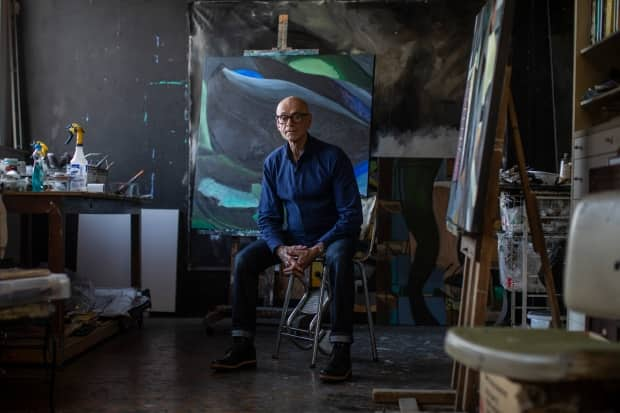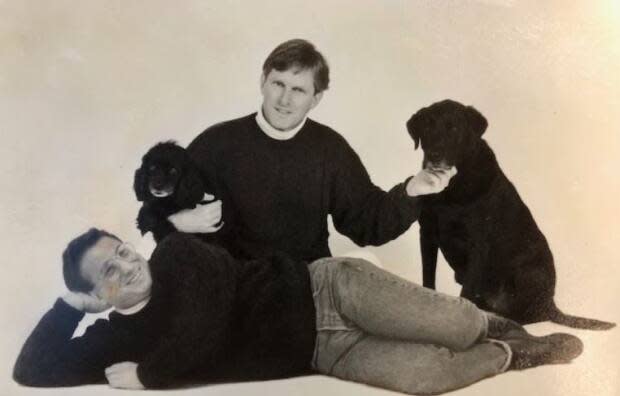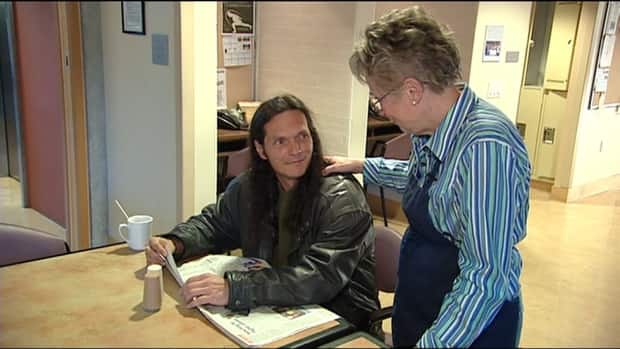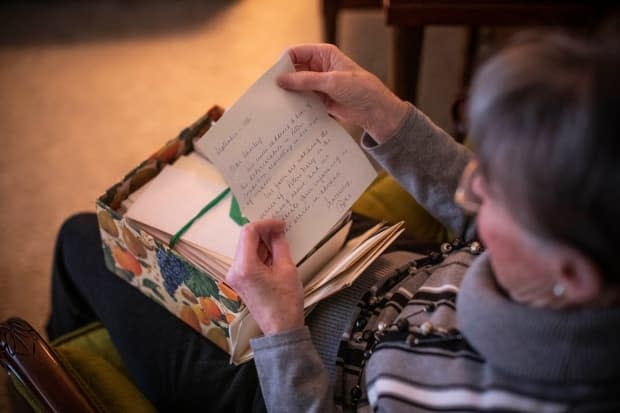Dr. Peter Diaries still resonate after 30 years, drawing parallels between the battles against AIDS and COVID

Thirty years since her son first dared to show his face on the nightly news, beaming his story of living with and eventually dying of AIDS into living rooms across British Columbia, Shirley Young still starts each morning with Dr. Peter's words:
"I accept and absorb all the strength of the Earth to keep my body hard and strong," she recited from memory. "From these elements I have come, and to these elements I shall return. But the energy that is me will not be lost."
Now 87, Young has devoted much of the past three decades to keeping that energy alive by continuing her son's work fighting the stigma of HIV/AIDS.
Broadcast as the Dr. Peter Diaries on CBC Television, the story of Peter Jepson-Young told of a deadly new virus killing marginalized people and traumatizing doctors and nurses in the 1980s and early 1990s — all playing out against the backdrop of a race to try to find a cure before more people died.
It has felt freshly relevant this year to those who lived through the worst of the AIDS crisis as a second wave of COVID-19 changes the way we live.
LISTEN | Shirley Young recites her late son's affirmation:
"We were going through a devastating time," said Silvia Guillemi, who was a resident doctor at St. Paul's Hospital in Vancouver back then and is now a director at the B.C. Centre for Excellence in HIV/AIDS.
"Eventually we managed to have treatments for it that have been very successful. And I'm hoping with COVID we'll get to that point pretty soon, much sooner than we did with HIV," she added.
The first broadcast
The night of the first broadcast on Sept. 10, 1990, Jepson-Young, then aged 33, sat at his mother's feet in the family's TV room.
In that episode, Jepson-Young explained how he knew something was wrong in September 1986 when he went from being able to climb the Lions — mountains on Vancouver's North Shore — to not being able to climb a flight of stairs over the course of about 10 days.
He was hospitalized, diagnosed with AIDS, and given nine to 14 months to live.
WATCH | Archival footage of Dr. Peter Jepson-Young:
Because of homophobia and the stigma about HIV/AIDS at the time, Young was worried about her son's decision to go public, that he could be attacked.
News reports from the time about HIV-positive people being murdered in the U.S. and elsewhere haunt her still.
But the audience responded, CBC decided to keep interviewing him each week until he could no longer, and Young became extremely proud. In total, 111 instalments would go to air.
For people in B.C., Jepson-Young became the face of the epidemic, which, according to a 2015 study in The Lancet, killed more than 6,200 British Columbians between 1981 and 2013.
WATCH | Jepson-Young speaks to CBC News in 1992 as his health declines:
Doctors and nurses
The medical professionals who treated Jepson-Young and other AIDS patients remember the intensity of that time.
Irene Goldstone was the director of nursing for the medical wards at St. Paul's Hospital, where she remembers "a continuous stream" of AIDS patients coming through the emergency room.
Many of them presented with infections in their lungs. They'd get hooked into ventilators, and then hit with complication after complication, one infection after the next.

"We were treating one condition and then something else would happen," said Guillemi. "We didn't have the treatments to provide to these patients to keep them alive and it was devastating."
She remembers every Thursday, 8-9 a.m., the medical teams would go through the list of patients who had died that week.
"I think we had 250 deaths each year," said Goldstone. "It was draining."
Making art about a virus
Artist Tiko Kerr was one of those men, sick in and sick of his lonely hospital bed at St. Paul's.
His physician, Dr. Julio Montaner — now world renowned for his work on HIV/AIDS — advocated to get Kerr drugs that ultimately saved his life.
Kerr recalls living in a state of constant fear, watching people dying around him and "treading water."

Since then, HIV/AIDS has been a motif in his paintings, and he himself has become a spokesperson and face for HIV/AIDS. Kerr is now working on a documentary about the connections he sees between HIV/AIDS and COVID-19.
"These microbes have been steering human history since the beginning of time," Kerr said. "I found myself as a part of it."
Montaner, meanwhile, has helped steer the HIV/AIDS epidemic to an end in B.C., declaring it over on World AIDS Day, Dec. 1, last year.

This Dec. 1, he'll announce rates of infection have decreased again, despite some early fears COVID would make controlling HIV harder.
But his optimism fades when he considers the fight against HIV/AIDS elsewhere in the world, which he says is "in peril."
"We have the threat of COVID today that unfortunately has taken all of the oxygen out of the room and made it so HIV services are in jeopardy," said Montaner.
The legacy continues
When Jepson-Young died on Nov. 15, 1992, people across British Columbia grieved.
At his memorial service, his partner, Andy Hiscox, said he had come to recognize he didn't belong to just him and his closest friends and family.
"I realized that Peter was your very special friend, your partner, your lover, your brother, your son, your uncle, your grandson," said Hiscox. "He gave us an identifiable face."

Hiscox carries his memories tenderly. A few times each week he passes the old apartment in the West End where he lived with Jepson-Young, looks up, and reflects on the short time they had together.
"When you love somebody and you go through a transformational time in your life with them, it's very hard to forget that," Hiscox said. "We did live each moment. It was almost as if time did stand still."
In the days before he died, Jepson-Young set up a foundation, which, five years later, opened the Dr. Peter Centre in Vancouver.

To this day, the centre provides housing, meals and counselling for HIV-positive patients, with an estimated 43,000 visits each year. It was the first health-care facility in North America to open a supervised injection site in 2002.
Before COVID forced her to stick closer to home, Young loved to volunteer there, serving meals, and seeing reflections of her son's vitality and struggle in the faces of today's HIV survivors.
Getting the chance to still be Dr. Peter's mom is a big part of her identity.

Amid three large scrapbooks with press clippings about her son and boxes of letters from people he moved, Shirley dug out her diary from the day her son died.
"It was so peaceful when he left and I felt such a range of emotions," she wrote. "Sadness and loss. But warmth, comfort, and peace. My son is gone. But he will live always in my heart."
Closing the diary, she added: "And obviously, still in a lot of people's hearts."
To hear the CBC's Jodie Martinson's radio series on The Early Edition about the legacy of Dr. Peter Jepson-Young and how is work resonates today, tap the audio link below:

